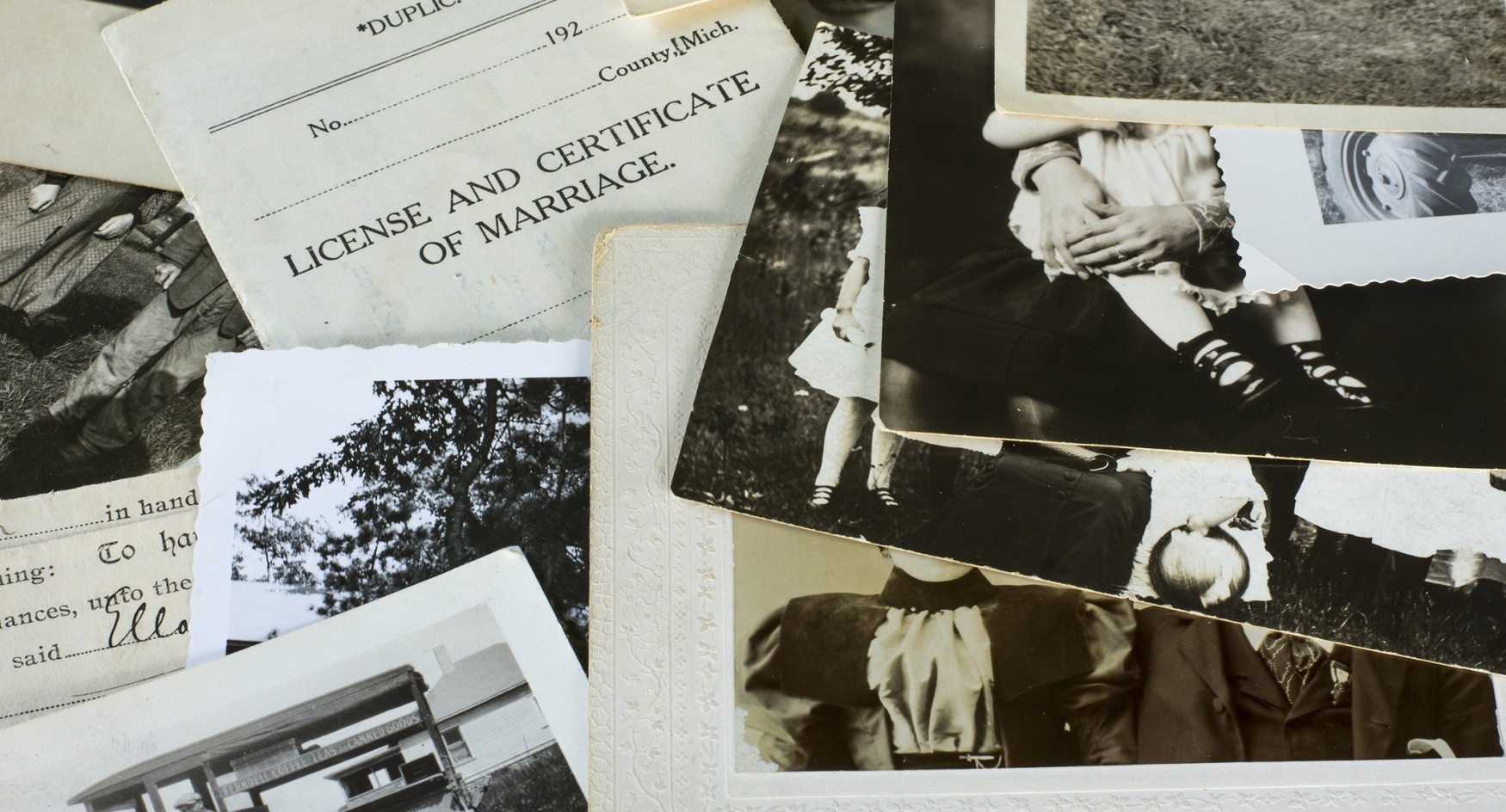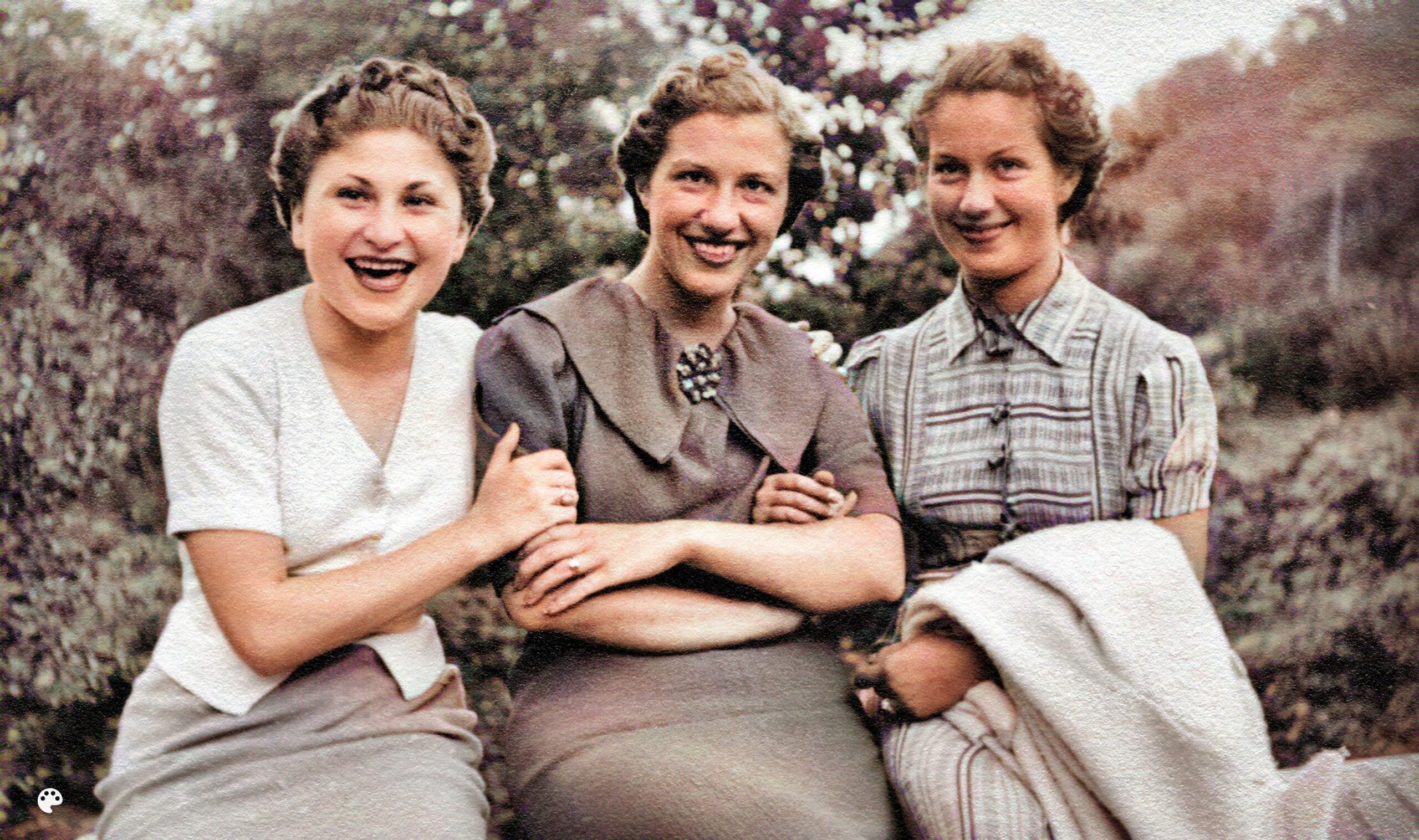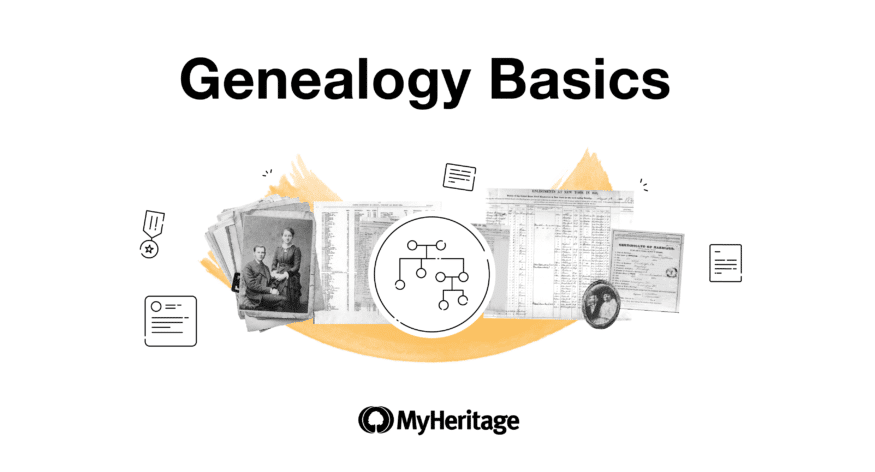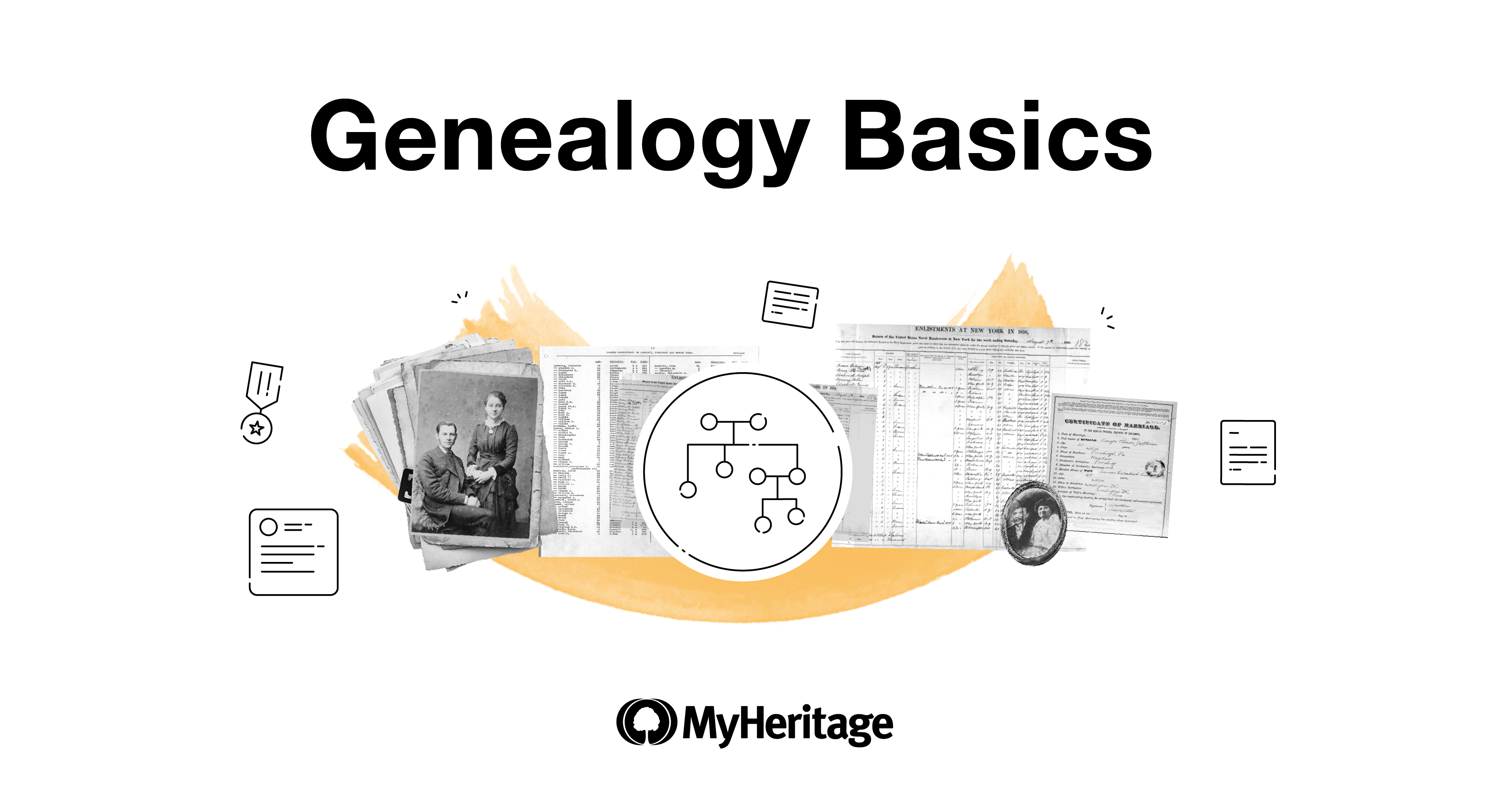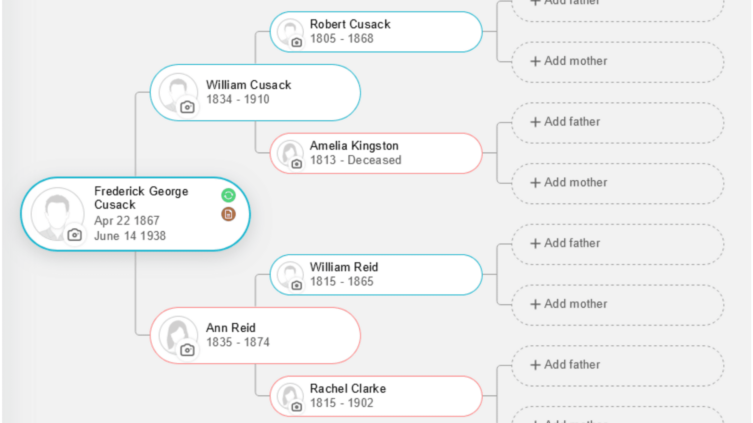

You might feel overwhelmed by the prospect of researching your family history. Where do you even begin? The generations of names, dates, and relationships can be too much if you’re new to genealogy.
Keeping track of how everyone is related can be even more complicated. Luckily, there’s a powerful method that can help you visualize your ancestry — a pedigree chart. Below, we explore how it can help you trace your lineage.
» Start uncovering your family history with a pedigree chart
What is a pedigree chart?
A pedigree chart is a diagram that visually tracks your ancestry. It uses standardized symbols to display relationships between people and their traits. You’ll encounter it in two main ways.
1. Genetics
In genetics, we use a pedigree mostly in breeding programs for animals and plants. It helps us understand how organisms inherit genotypes — sets of traits — through generations. For example, peas can have green or yellow colored seeds. By tracing the presence or absence of one color across time, you can find out how likely it is to appear in offspring.
As you see below, pedigree charts can also show how medical conditions persist throughout a lineage. The circles represent females, while the squares denote males. Additionally, filled symbols mark individuals with the condition, while the empty ones are meant for those without it.
» Understand more about identity through descent
2. Genealogy
In genealogy research, a pedigree chart shows your direct bloodline — parents, grandparents, etc. — across generations. It helps you visualize family relationships and better understand your family history.
It shows your parents’ and grandparents’ names, their birth and death years, and the locations where they lived. With that information, you can trace your origins and connect with relatives.
» Learn how to interview relatives when starting your genealogy journey
A history of pedigree charts in genealogy
Nobility was the first to use pedigree charts to show a connection to important people. The term “pedigree” soon became synonymous with “pure blood,” which meant a person belonged to a distinguished family line.
On the other hand, ordinary people didn’t trace their lineage, as it wasn’t considered necessary. Today, the concept has evolved. Everyone has a bloodline, so everyone has a pedigree. It simply refers to one’s ancestry, regardless of social standing.
Did you know?
The word “pedigree” comes from the Old French phrase “pied de grue,” which means “foot of a crane.” Early genealogical pedigree maps used forked lines to represent descent.
This resemblance led to the adoption of “pied de grue” for these charts, which eventually evolved into the word “pedigree,” signifying ancestral lineage.
» Here’s how to find out if you have royal ancestry
How does a pedigree chart differ from a family tree?
While both methods explore family history, their purpose is different. Let’s say a ladder reaches up from you, with each rung representing a generation. A pedigree chart focuses specifically on this direct line of ancestors. It starts with you and works its way back while including your parents, grandparents, and so on.
On the other hand, a family tree is a more comprehensive view of your lineage. It starts with you at the trunk, extending the branches outwards to parents, siblings, their spouses, and your nieces and nephews. It can extend
Note: Pedigree charts can be an excellent starting point in your research. You can use them to build the core structure of your immediate ancestry, which can be a foundation for further exploration.
» Learn more about how to create a family tree
Benefits and challenges of pedigree charts
There are many ways to map out genealogy visually; here’s why pedigree charts stand out:
- Clarity: They use a standardized format. Symbols and lines connect generations, making it easy to identify everyone and their relationships.
- Identifying gaps: Pedigree charts also highlight missing pieces, such as parents, spouses, or children. These become obvious gaps in the chart, prompting you to dig deeper.
- Research direction: These missing sections become your research roadmap. Missing grandparents? That points you towards historical records from their birthplace. Filling these gaps helps you reconstruct your family’s story, adding layers to your ancestry.
While pedigree charts are helpful, they also have limitations. Because the primary focus is on direct ancestors, information about extended family might be obscure. You might need to create separate charts or make additional notations on your main one to capture these members.
» Check out what to do if you find broken connections in your family tree
How to make a pedigree chart
You can unlock the secrets of your family history by following these steps to create your personalized pedigree chart.
1. Gather your Information
- The best place to begin is with yourself. This helps you easily visualize family relationships within the chart.
- Add your parents. Include their full names and birthdates. Also add any additional information you have, such as marriage date, place of birth, or date of death.
- Once your parents are listed, continue working your way upwards. Research your grandparents, their great-grandparents, and so on.
- As you move through each generation, try to collect as much information as possible for each ancestor.
» Learn how to use the MyHeritage database and find your ancestor’s records
2. Build the chart
1. Choose your format: There are several ways to create your pedigree chart. You can use a pre-printed form, draw on paper, or use online pedigree chart software.
2. Organize by generation: Separate each generation with horizontal lines. List individuals within a generation from left to right. Number each generation to keep track as you count back generations. Start with 1 for yourself and 2 for your parents. Etc.
3. Standardize symbols: Use standard symbols to represent individuals on the chart. Circles typically represent females, while squares represent males. Use vertical lines to connect spouses and horizontal lines to connect parents and children.
Note: Genealogists typically write dates as “day month year” without a comma (e.g., “4 Dec. 2014”) for easier readability and to avoid confusion.
4. Document information: Below each symbol, record the individual’s name and any known dates — even if they aren’t exact. Use abbreviations like “b.” for birth, “m.” for marriage, and “d.” for death to save space.
5. Leave space for expansion: As you discover new information, you’ll want to add it to your chart. Use blank spaces or placeholders like question marks to indicate areas where information is missing or uncertain. This helps maintain clarity and reminds you to research that information later.
Pay attention to inconsistencies as you build your chart. For example, dates that seem unlikely or significant gaps between generations may indicate errors that require further investigation.
» Mistakes happen in record keeping. Here’s what to watch out for
From core ancestry to extended family
Pedigree charts can be a good start for your genealogical research. But, tracking relationships can become challenging as you advance, especially when information is all over the place.
Luckily, there’s an online platform the can help you to switch to a comprehensive family tree view that contains aunts, uncles, cousins, and other extended family members in just a few clicks. You can also try the fan chart if you want to get a fresh look at your ancestry. Intrigued?
» Build your family tree from the ground up with a pedigree chart maker









